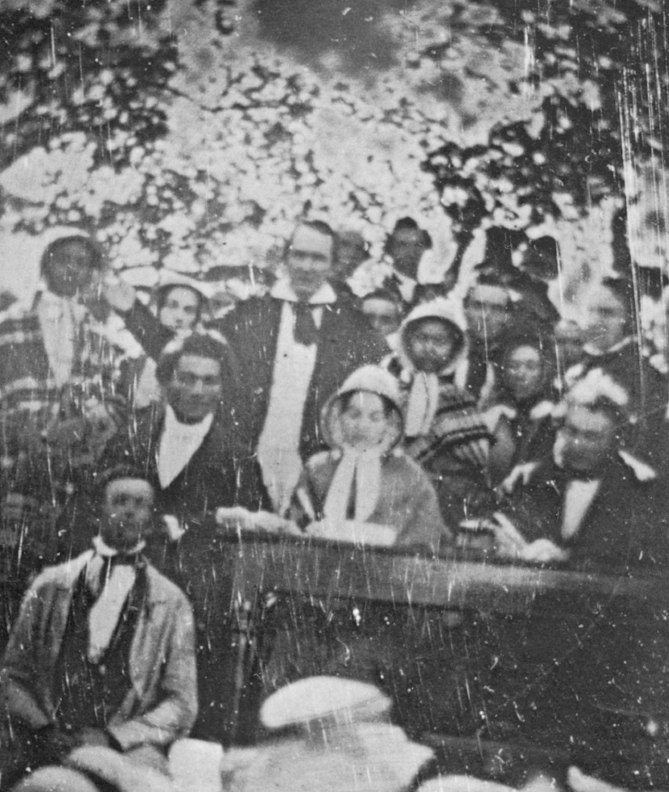Abolition Gains Ground and Enemies
The abolitionist movement shocked many Northerners, and in the late 1830s violence often erupted in response to antislavery agitation. Mobs threatened participants at the 1838 Antislavery Convention of American Women at Pennsylvania Hall in Philadelphia. After black and white women left the meeting arm in arm, the hall was burned to the ground. From 1834 to 1838, mobs routinely attacked antislavery meetings, lecturers, and presses as AASS agents crisscrossed the North recruiting followers and organizing local societies.
The massive petition campaigns in 1836 and 1837 generated both support and opposition. Thousands of women and men, including Amy Post and her husband Isaac, signed their names to petitions to ban slavery in the District of Columbia, end the internal slave trade, and oppose the annexation of Texas. While some evangelical women considered such efforts part of their Christian duty, evangelical ministers (including the Reverend Finney) condemned antislavery work as outside women’s sphere. Many female evangelicals retreated in the face of clerical disapproval, but others continued their efforts alongside their nonevangelical sisters. See Document Project 11: The Second Great Awakening and Women’s Activism. Many politicians were also opposed to mass petitioning, whether by women or men, so in 1836 Congress passed the gag rule (see chapter 10).
But gag rules did not silence abolitionists. In the 1840s, fugitive slaves helped alert Northerners to the horrors of slavery. The most important of the fugitive abolitionists was Frederick Douglass, a Maryland-born slave who fled to New Bedford, Massachusetts, in 1838. He met Garrison in 1841, joined the AASS, and four years later published his life story, Narrative of the Life of Frederick Douglass, as Told by Himself. Having revealed his identity as a fugitive slave, Douglass sailed for England, where he launched a successful two-year lecture tour. He then returned to the United States; moved to Rochester, New York; and began publishing his own antislavery newspaper, the North Star. Amy Post be-friended Douglass, and the Western New York Anti-Slavery Society raised funds and subscribers to support his work.
While eager to have fugitive slaves tell their dramatic stories, many abolitionist leaders did not match Post’s vigorous support of African American activists asserting an independent voice. Although these abolitionists opposed slavery, they still believed that blacks were inferior to whites. Thus several affiliates of the AASS refused to accept black members. Those that did often faced resignations from members who opposed the innovation. Ultimately, the independent efforts of black activists such as Douglass helped to expand the antislavery movement even as they made clear the limits of white abolitionist ideals.
Conflicts also arose over the responsibility of churches to challenge slavery. The major Protestant denominations included southern as well as northern churches. If mainstream churches such as Presbyterians, Baptists, or Methodists refused communion to slave owners, their southern branches would certainly secede. Still, from the 1830s on, abolitionists pressured their churches to take Christian obligations seriously and denounce human bondage. Individual churches responded, but aside from the Society of Friends, larger denominations failed to follow suit.

In response, abolitionists urged individual Christians to break with churches that continued to accept slaveholders. Antislavery preachers and parishioners pushed the issue, and some worshippers “came out” from mainstream churches to form antislavery congregations. Union churches, composed of evangelical “come outers” from various denominations, were founded in New York State and New England. White Wesleyan Methodists and Free Will Baptists joined African American Methodists and Baptists in insisting that congregants oppose slavery in order to gain membership. Although these churches remained small, they served as constant reminders to mainstream denominations of their continued ties to slavery.